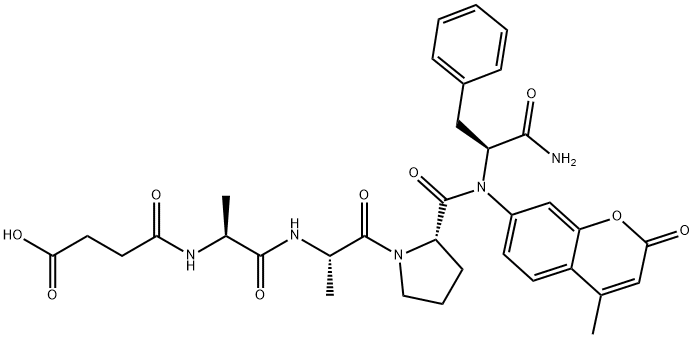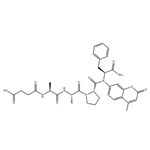Description
Chymotrypsin Substrate II, Fluorogenic finds widespread utility across diverse scientific research applications, encompassing the exploration of protein-protein interactions, enzyme kinetics, and receptor binding. Notably, its cost-effectiveness and user-friendly nature render it an appealing choice for researchers. Additionally, this peptide has been instrumental in delving into the intricate world of cell signaling pathways and unraveling the mechanisms governing gene expression regulation. It is postulated to function as a substrate for enzymes while also engaging with receptors. The prevailing belief suggests that the peptide effectively binds to specific receptors, subsequently triggering their activation and instigating consequential alterations in cellular signaling pathways.
Chemical Properties
White powder
Uses
Chymotrypsin Substrate II, Fluorogenic (cas# 88467-45-2) is a useful compound in organic synthesis and acts as a substrate for chymotrypsin enzyme.
Biological Activity
Sensitive fluorogenic substrate for the quantitative determination of chymotrypsin activity (excitation maximum: ~380 nm; emission maximum: ~460 nm).
References
[1] G B IRVINE C H W M Ennis. Visual detection of peptidase activity using fluorogenic substrates in a microtiter plate assay.[J]. Analytical biochemistry, 1990, 185 2: 304-307. DOI:
10.1016/0003-2697(90)90298-n.
[2] LASZLO GRAF. Selective alteration of substrate specificity by replacement of aspartic acid-189 with lysine in the binding pocket of trypsin[J]. Biochemistry Biochemistry, 1987, 26 9: 2616-2623. DOI:
10.1021/bi00383a031.
[3] OSHIMA G. Interaction of alpha-chymotrypsin with dimyristoyl phosphatidylcholine vesicles.[J]. Journal of biochemistry, 1984, 95 4: 1131-1136. DOI:
10.1093/oxfordjournals.jbchem.a134701.
[4] OSHIMA G. Stimulation by phospholipid vesicles of proteolysis of egg white lysozyme by chymotrypsin.[J]. Journal of biochemistry, 1983, 5 1: 1615-1620. DOI:
10.1093/OXFORDJOURNALS.JBCHEM.A134509.

